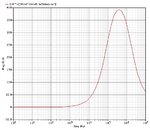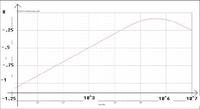bhl777
Full Member level 6
Hi guys, I designed a OTA-C bandpass filter according to some spec. from a supervisor. The pictures are the Cadence simulation of the bandpass performance. But I do not know how to use this data to determine the specs of this filter, like (1) passband attenuation, (2) stop-band rejection, and (3)passband ripple.
If I want to say the passband is from 100Mhz to 1Ghz, does any one tell me how to calculate those parameters?
If I want to say the passband is from 100Mhz to 1Ghz, does any one tell me how to calculate those parameters?



